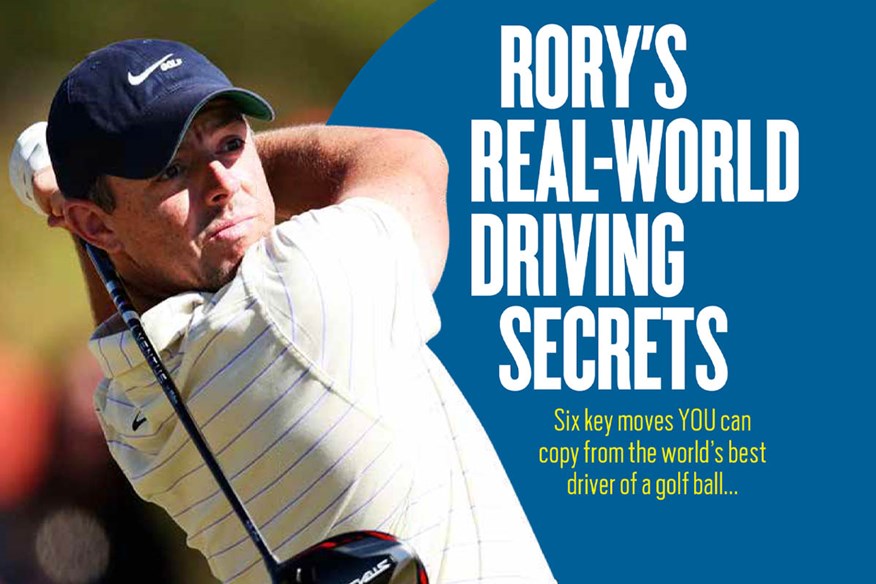Six key moves you can learn from Rory McIlroy
Last updated:
Top coach Chris Ryan highlights the key moves in Rory McIlroy’s driver swing – and how you can groove them into your own action.
Yes, we hear it too – our rather tactless inner monologue, which right now is saying something along the lines of “How on Earth can anything Rory McIlroy does be relevant to you?” He is, after all, a honed athlete who hit a million balls before he was 15. He has a driver swing speed of 122mph, a ball speed of 183mph and an average driving distance in excess of 320 yards. And where we try to wrestle our driver into submission, to watch Rory McIlroy in full flow is to wonder where the golfer stops and the golf club starts.
But let’s look at this from a more constructive angle. Rory is, in fact, human. Despite appearances to the contrary, he is subject to the same laws of physics that govern us… and so is his golf swing. The movement principles and patterns he employs so beautifully are universal, and there is absolutely nothing to stop us applying them to our games, at whatever level we find ourselves.
We could talk here about the usual talent-not-required element – set-up. Of course, athletic posture, neutral aim, a sound grip and forward ball position are all crucial to solid driving; but while Rory embodies all those attributes, they are technical staples not specific to him. So let’s instead focus on the sexier stuff – the stunning motion that creates so much power and that incredible high draw. No one is suggesting that after one magazine article you are going to swing it like Rory; but with a better understanding of how the best driver in the world does it, your own driving cannot help but improve.
Let’s look at the key pieces of a swing that have helped Rory McIlroy get back to the top of the game.

1. Getting it started
We can all agree that Rory’s driver technique is magnificent. Yet you will notice a theme running through this article of just how much ‘great advice’ his super action contradicts. The way he starts the swing is a great example. Over the years, we have had it drummed into us how much care we need to take at the start of the swing. We need to stay ‘centred’. We need to take the club ‘back low and slow’. This is only possible from a ‘relaxed’ address position. We see none of this in Rory’s start. In contrast, he fires energy and dynamism into his action from the very first move. Here’s how he does that…
I. The first move
Watch Rory carefully and you will see his first move is a bodily shift, laterally away from the target. There is almost no motion in the arms and club; in fact, it almost looks as if the club’s sole is glued to the floor and he is trying to pull upwards and back to get it unstuck.
II. Mass shift… super early
Rory’s first move isn’t necessarily what you will read in the textbooks. But it gives his action three advantages that positively affect what follows:
1. It sets up the feel and process of the core moving the club, NOT the hands and arms. As we will see, this is central to his ability to create width, power and flow.
2. Weight shift creates extra pressure under each foot in turn, allowing us to use the ground to create momentum and power. As Rory demonstrates, this shift is easier to create and control when club and body are moving relatively slowly.
3. With a first move engaging weight shift and his large core muscles, Rory is firing energy into the system right from the off. Contrast that with a passive body and early clubhead motion… which instantly feels weak and lightweight.

2. Takeaway: trail arm stays straight
Next time you get a chance to watch Rory in action, take a look at his right or trail arm through the first part of the swing. It remains ramrod straight, the elbow almost locked. In fact, it doesn’t start to fold until his hands reach chest height. What does this do for him? And why should you copy it?
The wrong way: fold and collapse
Examine what happens when that trail elbow folds or collapses during the takeaway:
– The hands and forearms start to roll, opening the clubface and taking the club well inside its optimal, neutral path.
– The chest and shoulders stop rotating.
– The shape of the swing already starts to look overflat, creating a need to steepen on the way down – and that means slices.
The right way: trail arm retains extension
Now let’s look at what happens when that trail arm retains the extension it had at set-up, as Rory demonstrates:
– The hands and forearms show a more muted and natural rotation, in harmony with the arc of the swing. This helps keep the face much squarer, as shown by the driver’s leading edge mimicking my spine angle.
– The chest and shoulders rotate more readily as that extended trail arm ‘forces’ the trail shoulder back and around.
– There is a much better tilt to the rotation, the lead shoulder working down under the chin as it rotates. This sets up a far better angle or plane for the swing as a whole.
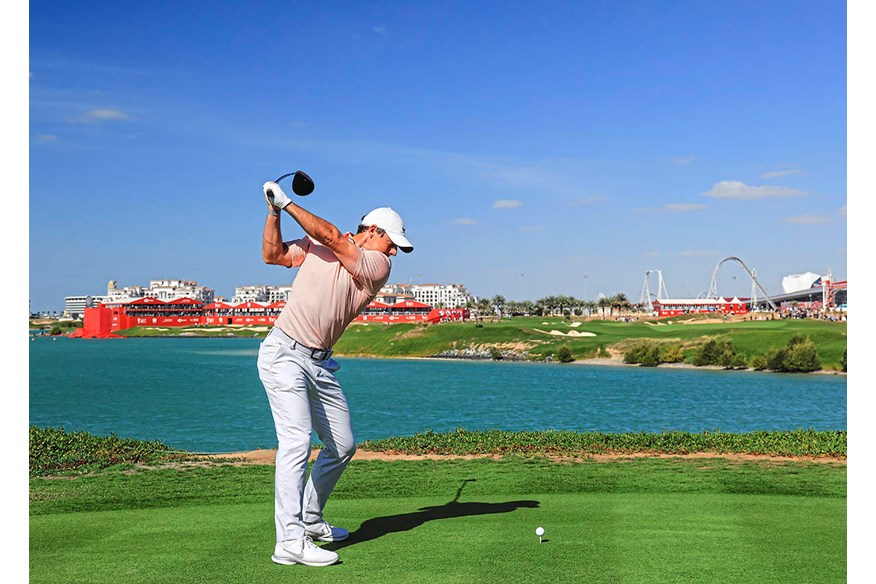
3. At the top: Club in a ‘deeper’ position
To understand what we mean by ‘deeper’, consider these two trademark aspects of Rory’s position at the top:
– His left or lead arm ‘covers’ his shoulders.
– The handle of the club is ‘behind’ his heels.
These elements combine to take the club a healthy distance inside the ball-target line; the further the club is inside that line, the ‘deeper’ it is. But what does this do for Rory? And how can it help you?
Quick on the draw
A deeper position at the top encourages a yard-eating draw by giving us more room and time to approach the ball from inside the ball-target line. It also promotes the ideal low-spin, high-launch driver strike by encouraging a shallow, sweeping attack through the impact zone. This deep position is a key part of Rory’s ability to create his famous and enviable high, drawing driver flight.
Game of opposites
The benefits of getting deep at the top become a lot clearer when you picture a far more upright position, the lead arm steeper than the shoulder pitch and the hands higher and closer to the ball-target line.
The wrong way: Outside… and steep
With the hands starting the downswing closer to the ball-target line, it is much easier to find yourself outside the ideal path as your upper body unwinds. This typically leads to a steep attack and weak, spinny strikes. Expert golfers who swing upright – for example Justin Thomas and Bubba Watson – avoid this by making complex shallowing moves as they start down. But for the club golfer with little time to practise, it makes far more sense to take Rory’s lead and avoid the need for it by getting deeper at the top.
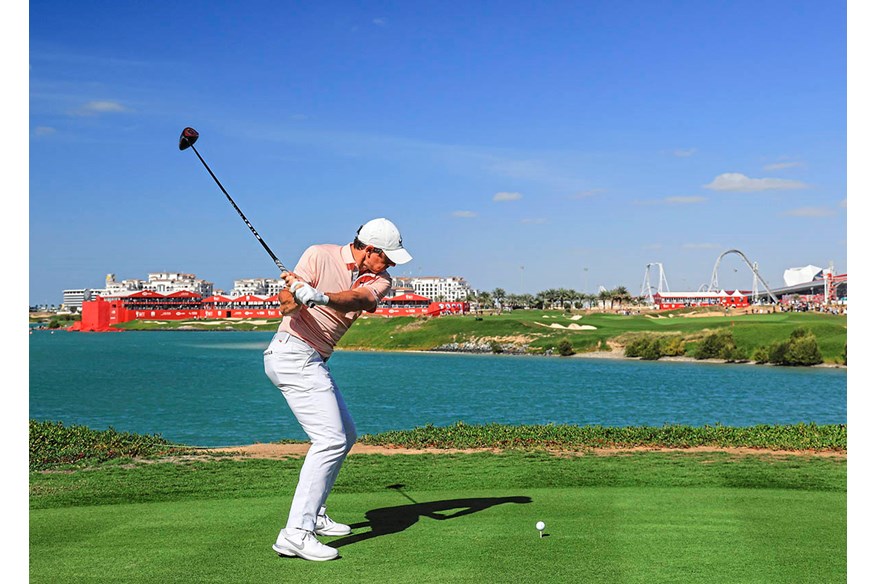
4. First move down: arms lower the club
You’ve read it so many times before – how the downswing starts from the ground up, lower body leading and the upper body responding. But watch Rory from the top and you’ll see this isn’t the whole story. Sure, his legs and lower body are active… but so, too, are his hands and arms. Far from being passive, they work hard to swing the club downwards from the top. Let’s examine this important and overlooked move… and see how it promotes that lovely draw.
Up… and down
Every golf swing – including Rory’s – is made up of two basic movements: the body rotates, while the arms swing up and down. During the backswing, the upward motion of the arms takes place automatically; but their corresponding downswing downward move does not always come so naturally… especially when our downswing focus is on the lower body.
Over the top
This is important, because – as Rory demonstrates so beautifully – it’s this downward motion of the hands and arms that puts the club into position to attack the ball from inside the ball-target line – the source of a draw. If the arms fail to drop we have no option but to swing from above the ideal path and plane… and that means a leftward attack path (right-handers), a choppy strike and spinny slices.

5. Impact: head back and tilted
Rory himself tells us, “I have always been around four or five degrees up on my attack angle.” In other words, his driver is sweeping upwards through the strike, an attack that allows him to send the ball high with minimal spin – the perfect combination for distance. But how does he achieve this high launch? Certainly from the in-to-out impact path his technique delivers, but also through his head position at impact.
No drift
Watch Rory’s downswing from face-on and you will see his head pretty much holds its position, despite an aggressive shift into his lead side. In fact if anything it moves slightly backwards, away from the target – though his face is tilted forwards, often revealed by the angle of his cap.
Out to launch
With the low point of the swing’s arc falling under the lead shoulder, your head position through the strike strongly influences whether the club is swinging downwards or upwards at impact. By holding his head back, Rory ensures this low point comes well before the strike… guaranteeing a rising clubhead at impact and that gorgeous, high-launching flight.
Avoid this
Let’s get one thing clear. Rory’s head is not actually dropping backwards: it is holding position while his lower half moves forwards. Club golfers commonly try to launch the ball by bumping their lead hip forwards and up and rocking their upper body back. This only stalls weight shift and rotation, while shifting the low point miles behind the ball. You can’t hit decent drives with this move.
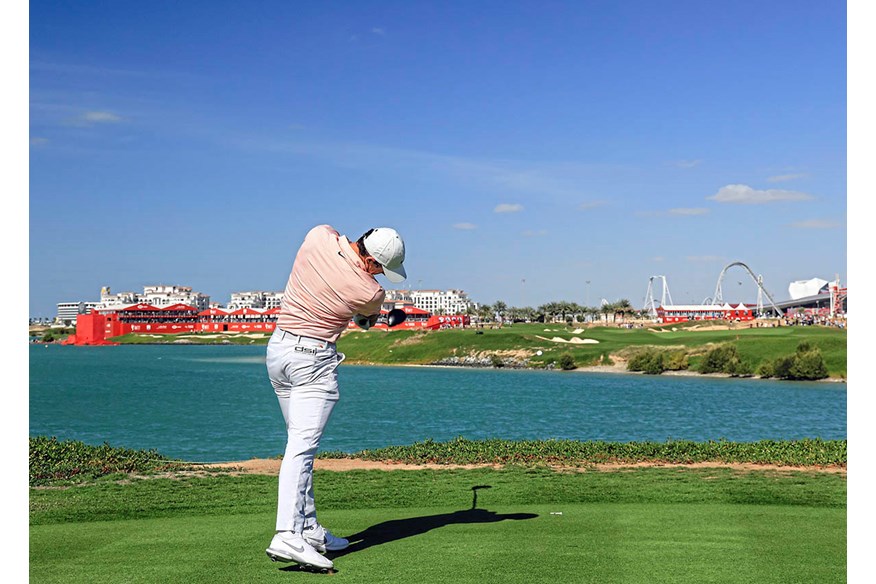
6. Through-swing: extension creates power
We can all picture how wide, explosive and powerful Rory looks through the ball. And while we might struggle to match his sheer athleticism, there is a technique at work here we can all adopt to gain power. It’s the power of extension… and to understand it better, let’s again look at the all-too-common opposite move.
Staying down: cramped up
Club golfers are often taught to ‘retain their angles’ during the swing. While this instruction is generally helpful during the backswing and downswing, we need to forget about it on the way through. Trying to ‘stay down on’ or ‘on top of’ the ball is poison for power because it stops you using the ground and denies you access to the big, powerful muscles in your legs and glutes. You’ll simply find this cramped and armsy followthrough position, and hit weak slices.
More extension, more speed
In stark contrast, Rory is more than ready to trade those body angles for power as he tears through the ball. Pushing down against the ground, he goes from a distinct, squatted look during his downswing to this far more extended and upright position through the strike. By using the ground and recruiting the big core muscles, this motion allows him to release the club with more width and more speed.
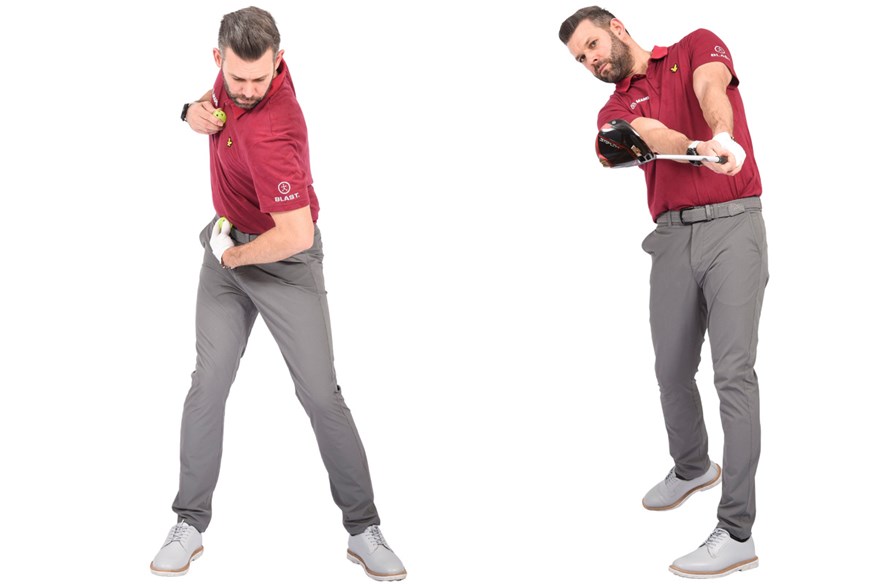
Leading coach Chris Ryan has put together a drill to help you learn and groove each of these six key moves. You can access them on the Today’s Golfer Members’ website.
-
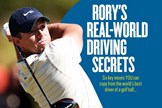 What you can learn from Rory McIlroy's driver swing
What you can learn from Rory McIlroy's driver swing
-
 Chris Ryan highlights the moves you can copy from Rory McIlroy and how to groove them into your swing
Chris Ryan highlights the moves you can copy from Rory McIlroy and how to groove them into your swing
-
 What can you learn from Rory McIlroy's downswing?
What can you learn from Rory McIlroy's downswing?
-
 Rory McIlroy is one of the best drivers of the golf ball in world golf
Rory McIlroy is one of the best drivers of the golf ball in world golf
-
 Rory McIlroy keeps the trail arm straight in his takeaway
Rory McIlroy keeps the trail arm straight in his takeaway
-
 You can copy the first move of Rory McIlroy's takeaway
You can copy the first move of Rory McIlroy's takeaway
-
 Rory McIlroy hits driver with an upwards angle of attack and an in-to-out swing path
Rory McIlroy hits driver with an upwards angle of attack and an in-to-out swing path
-
 Rory McIlroy gets his club into a nice 'deep' position at the top of his swing
Rory McIlroy gets his club into a nice 'deep' position at the top of his swing
